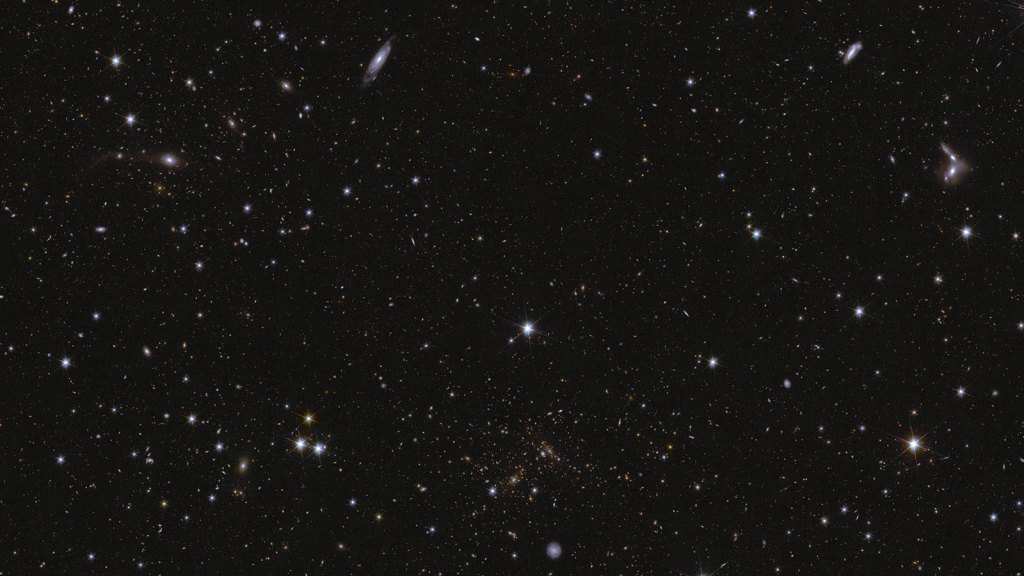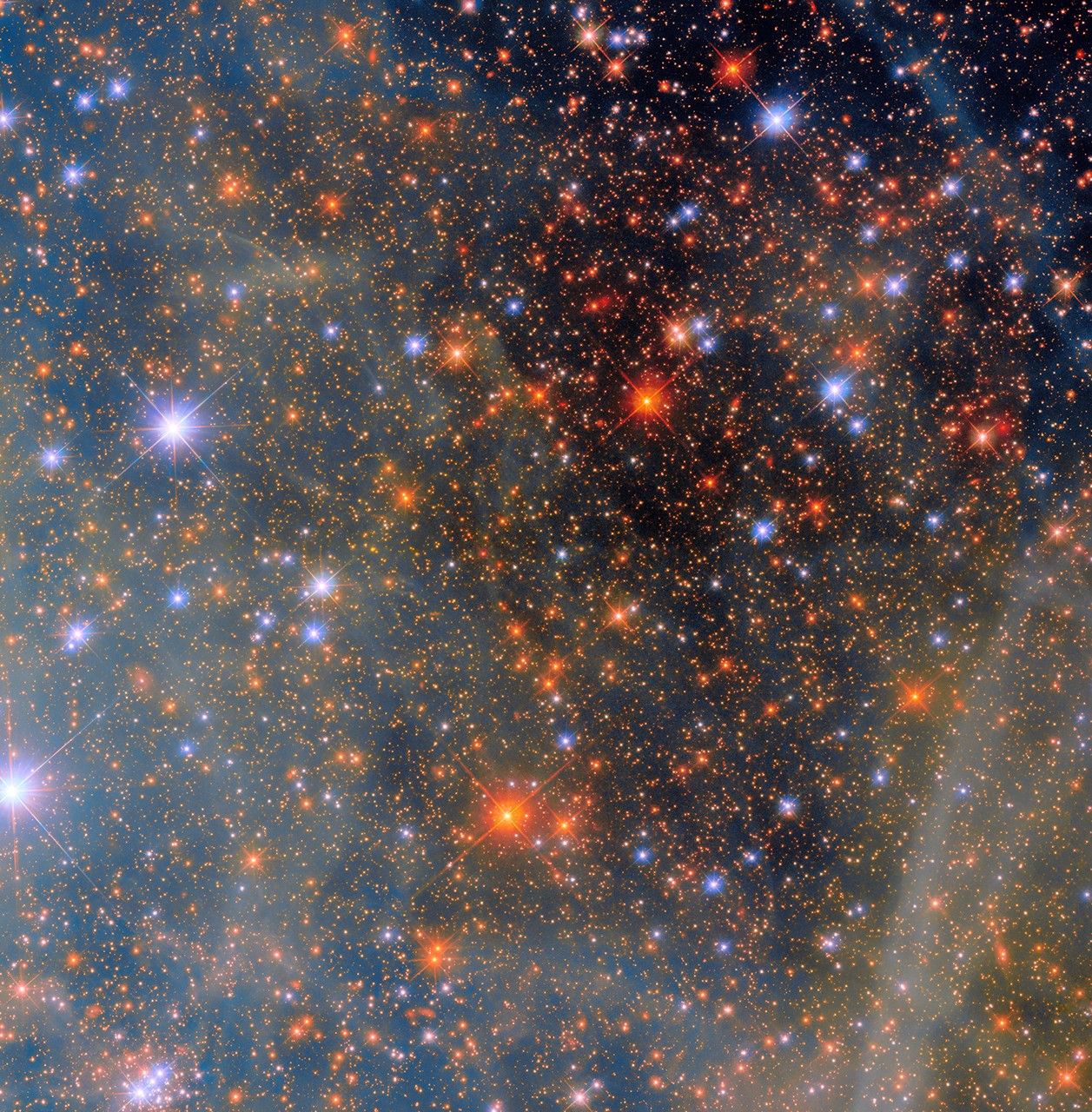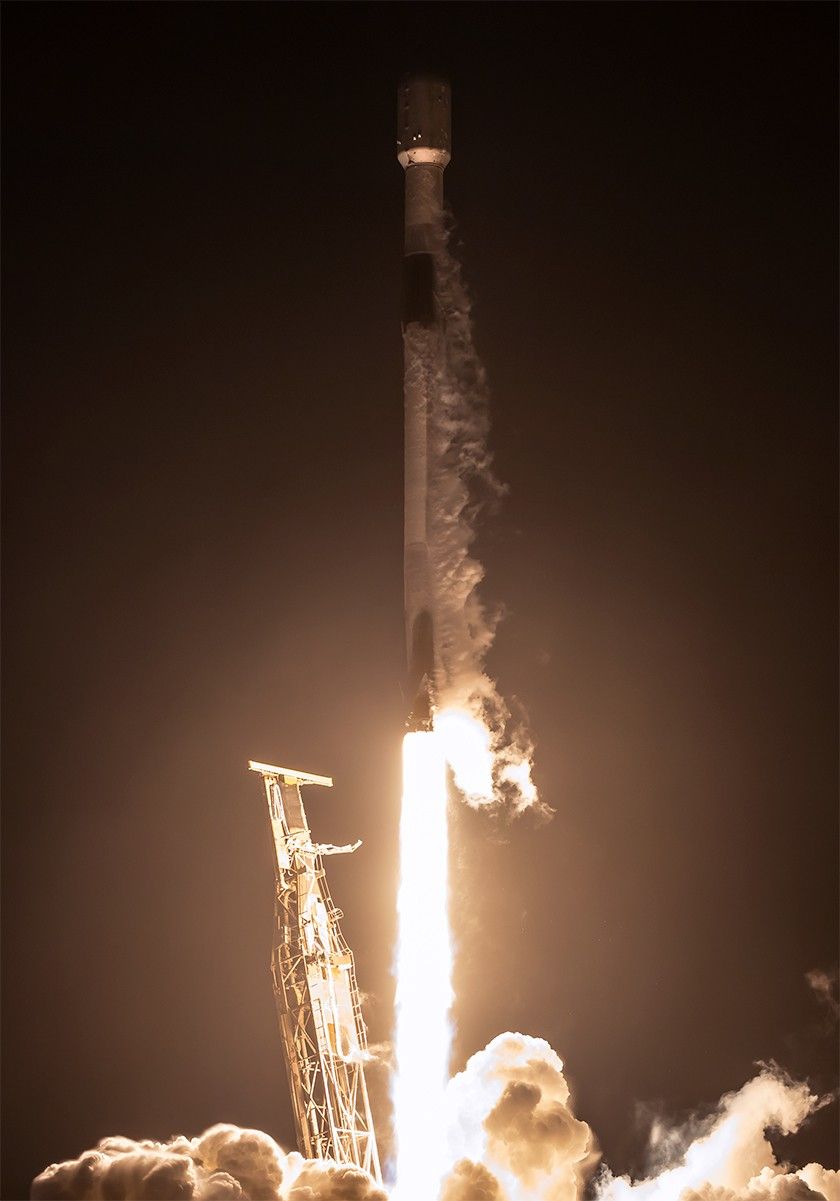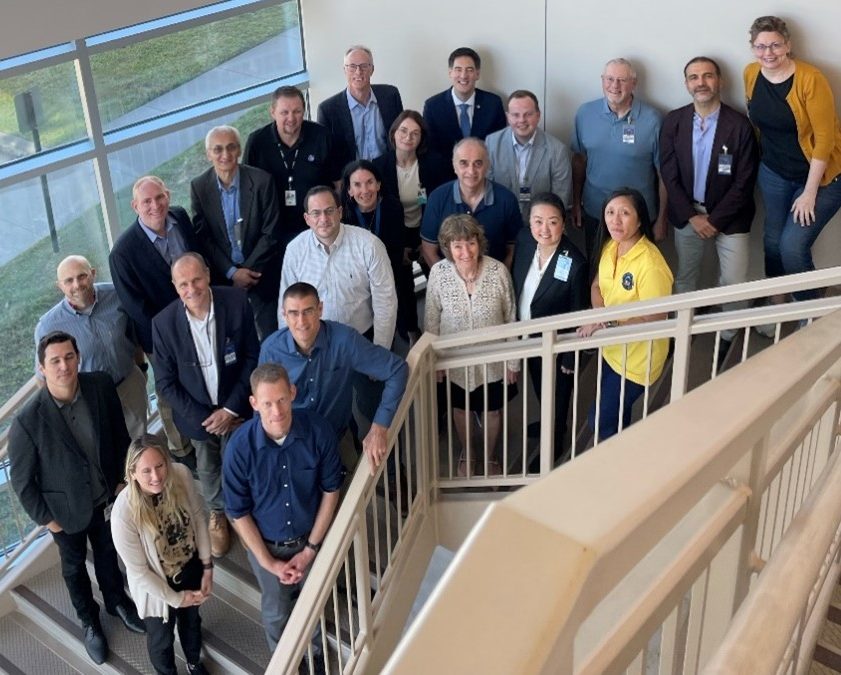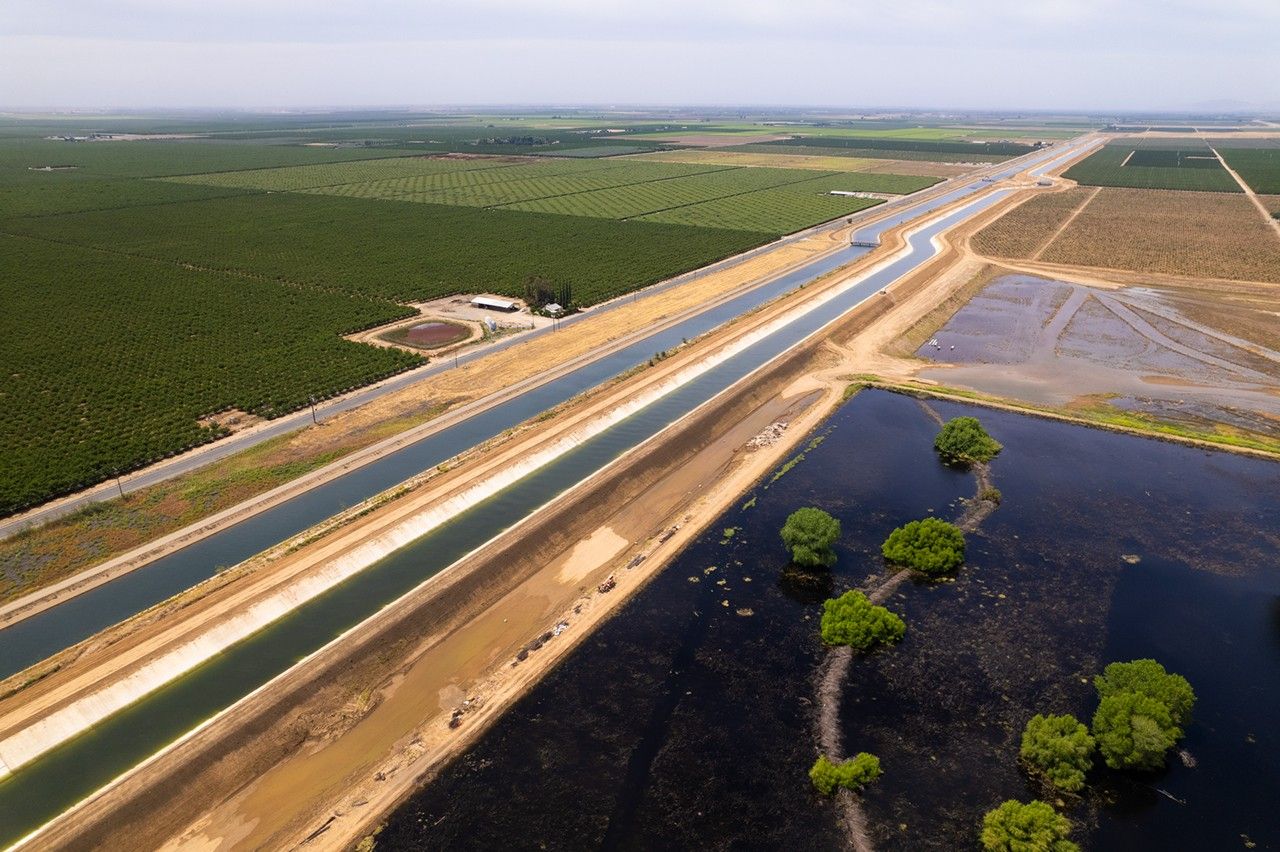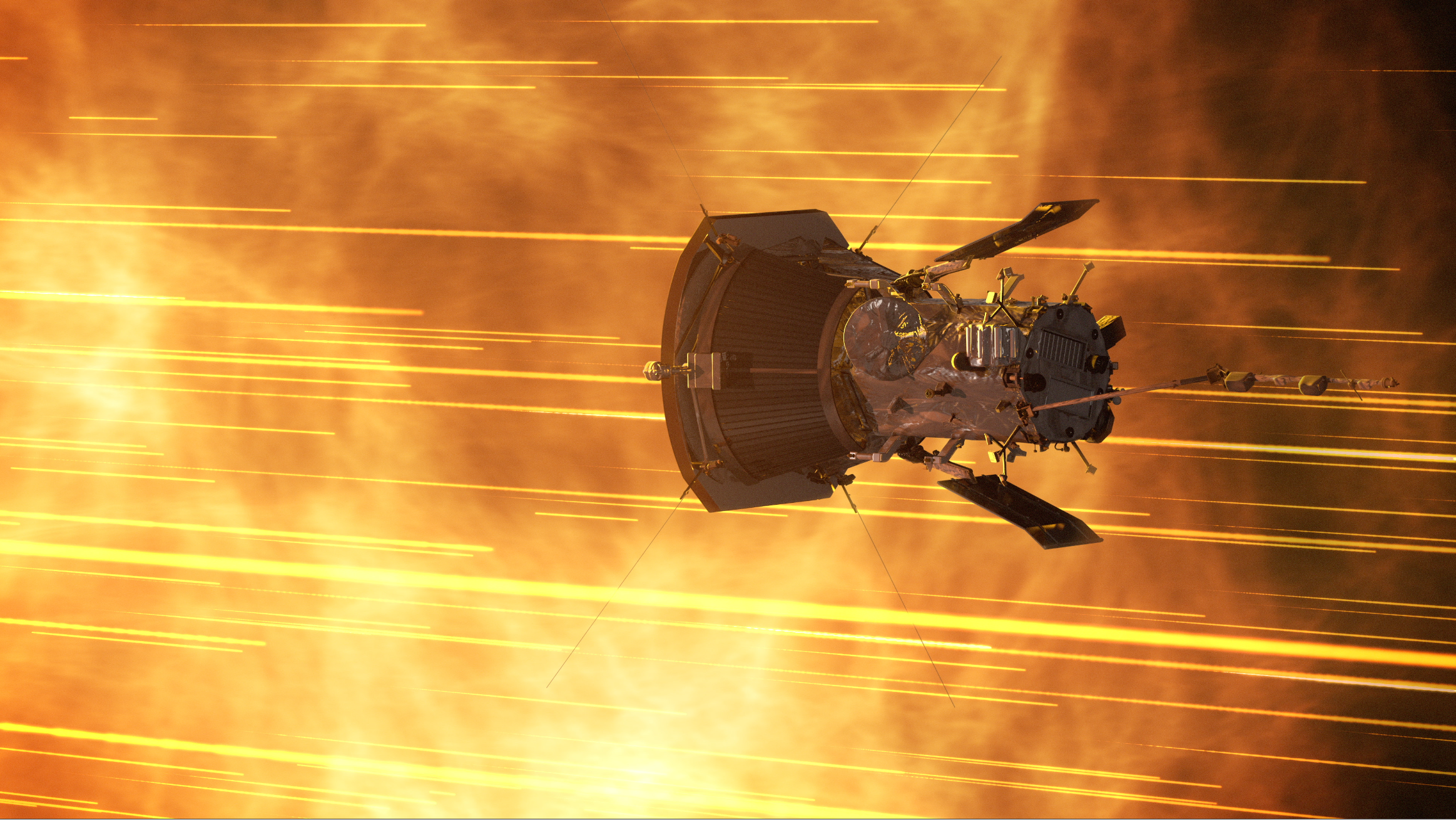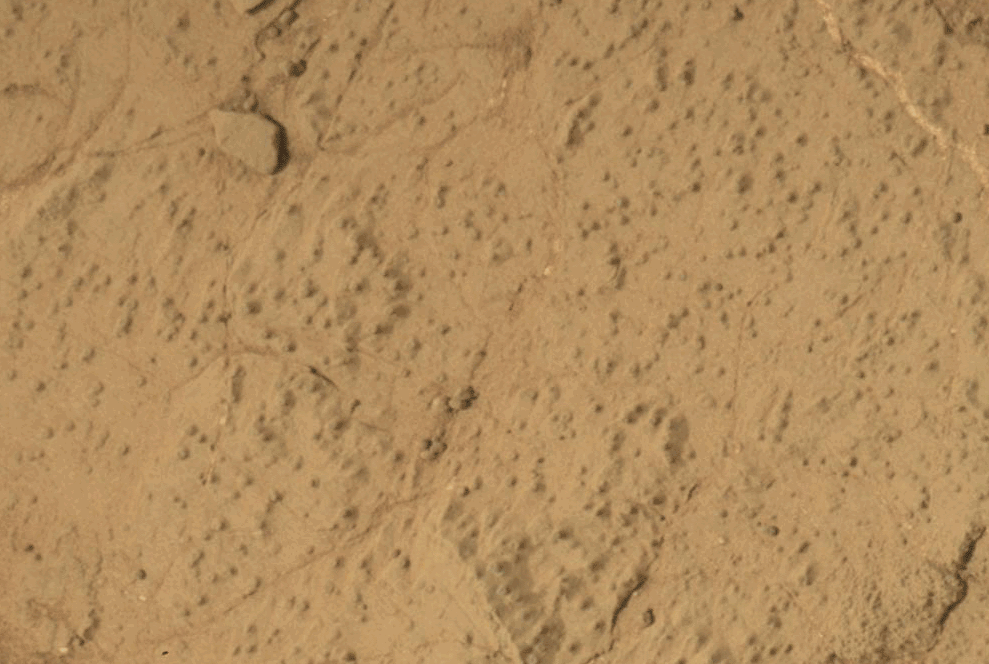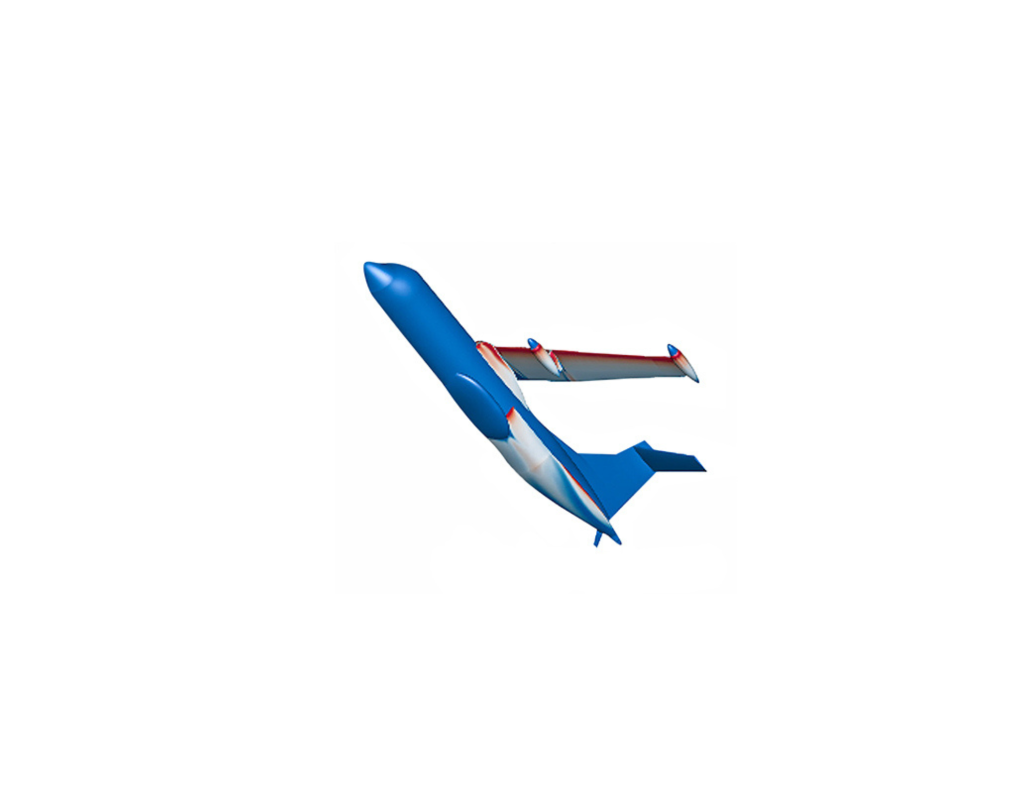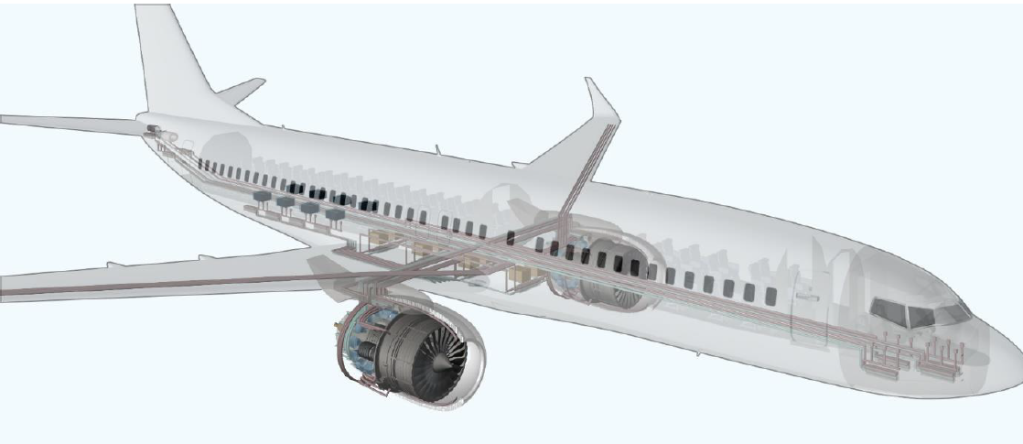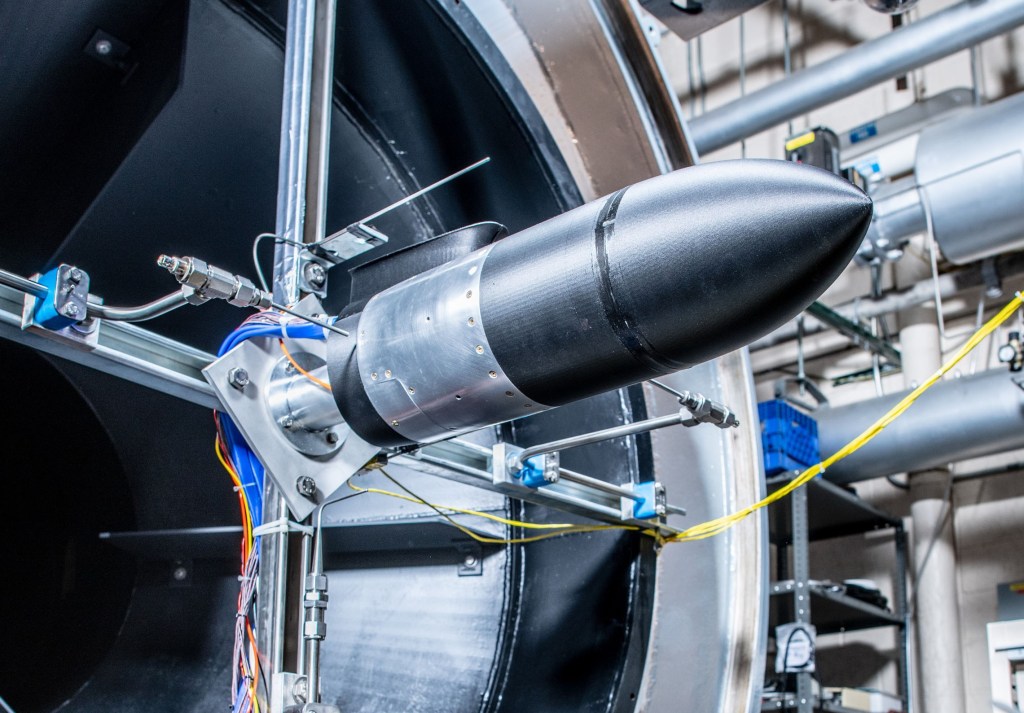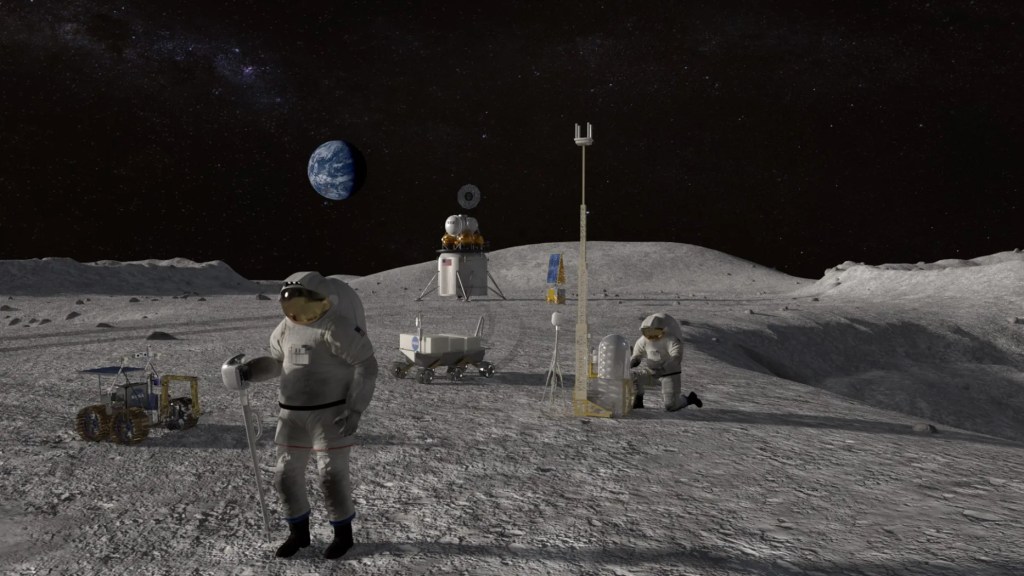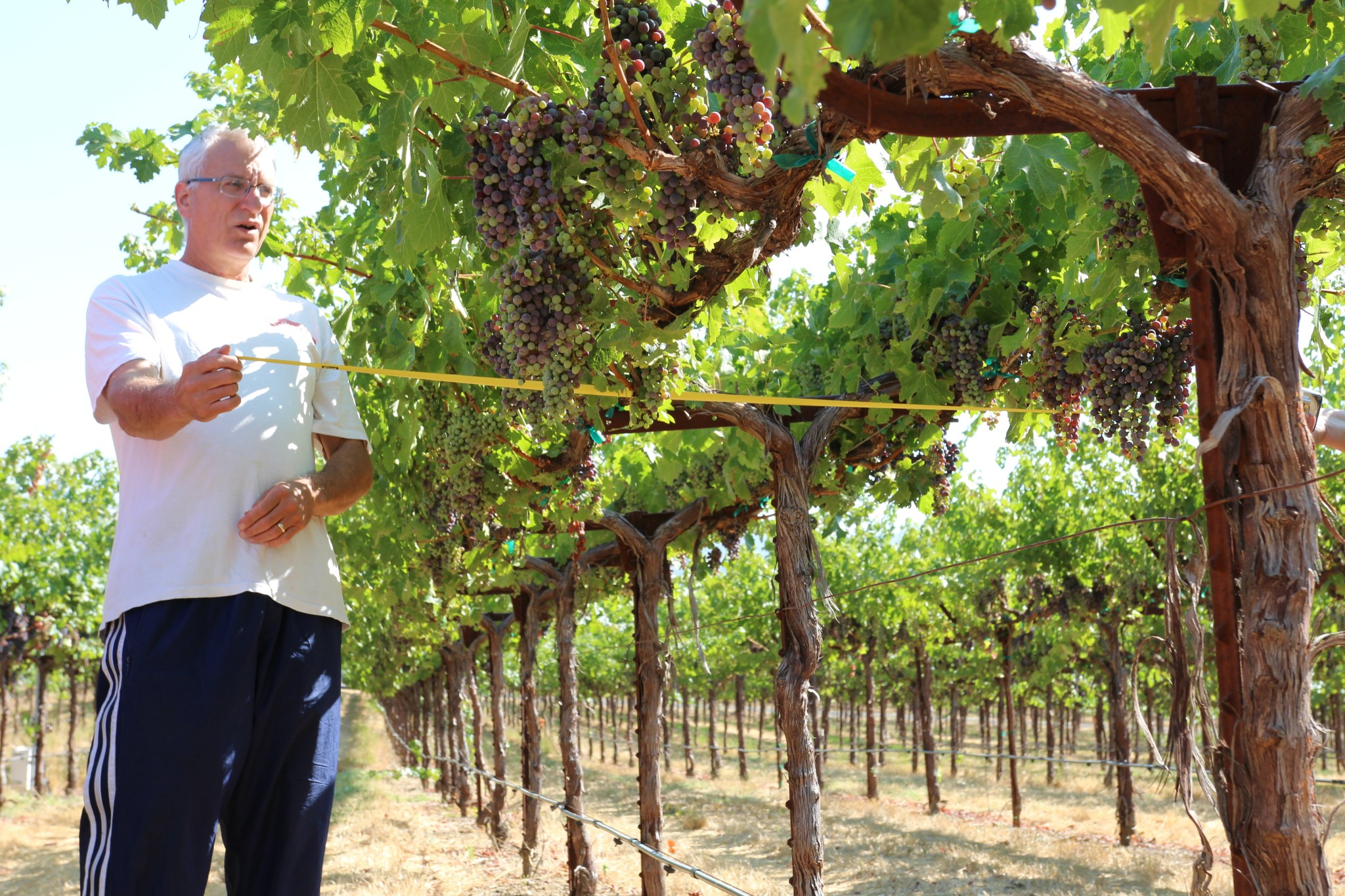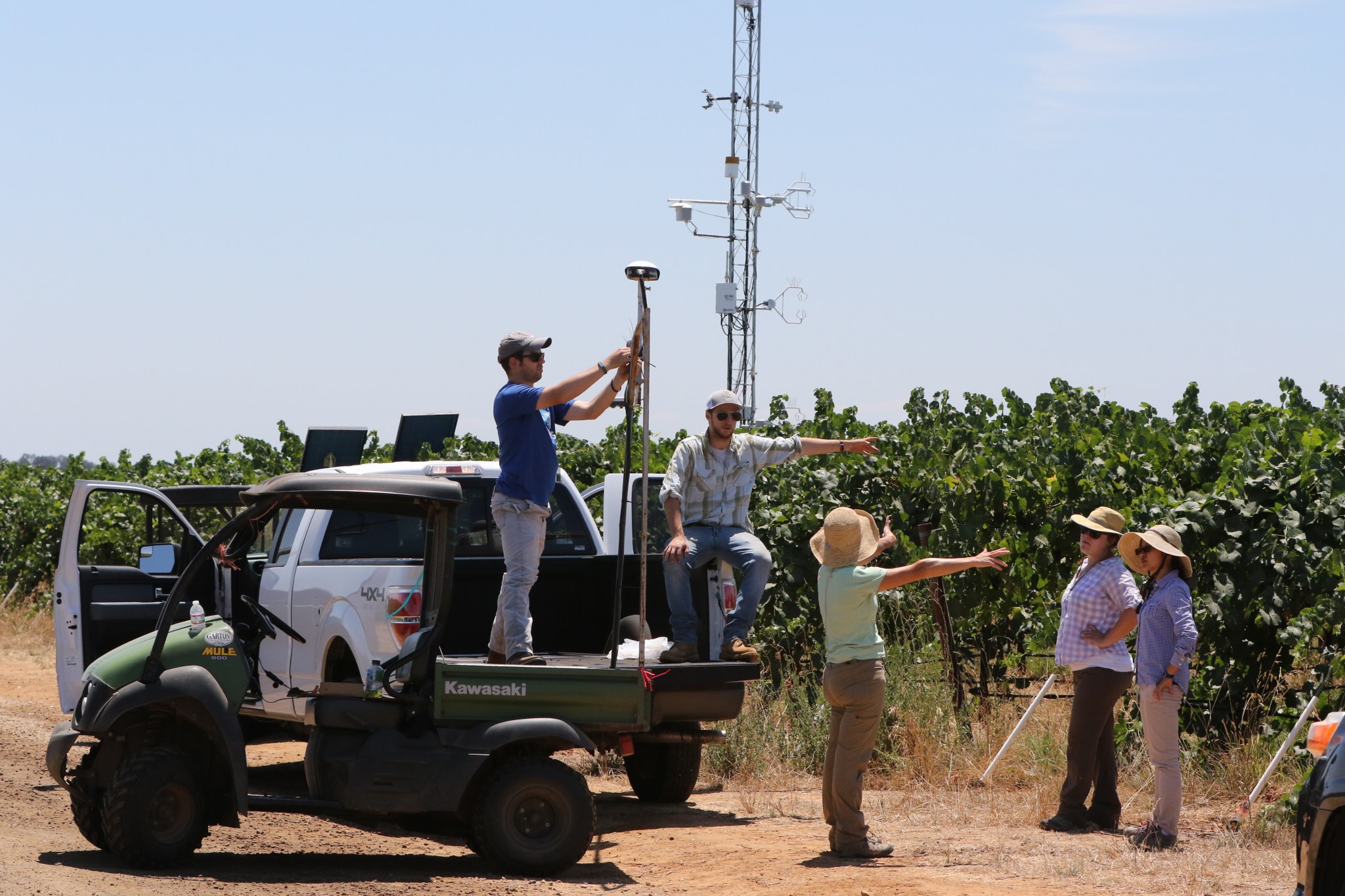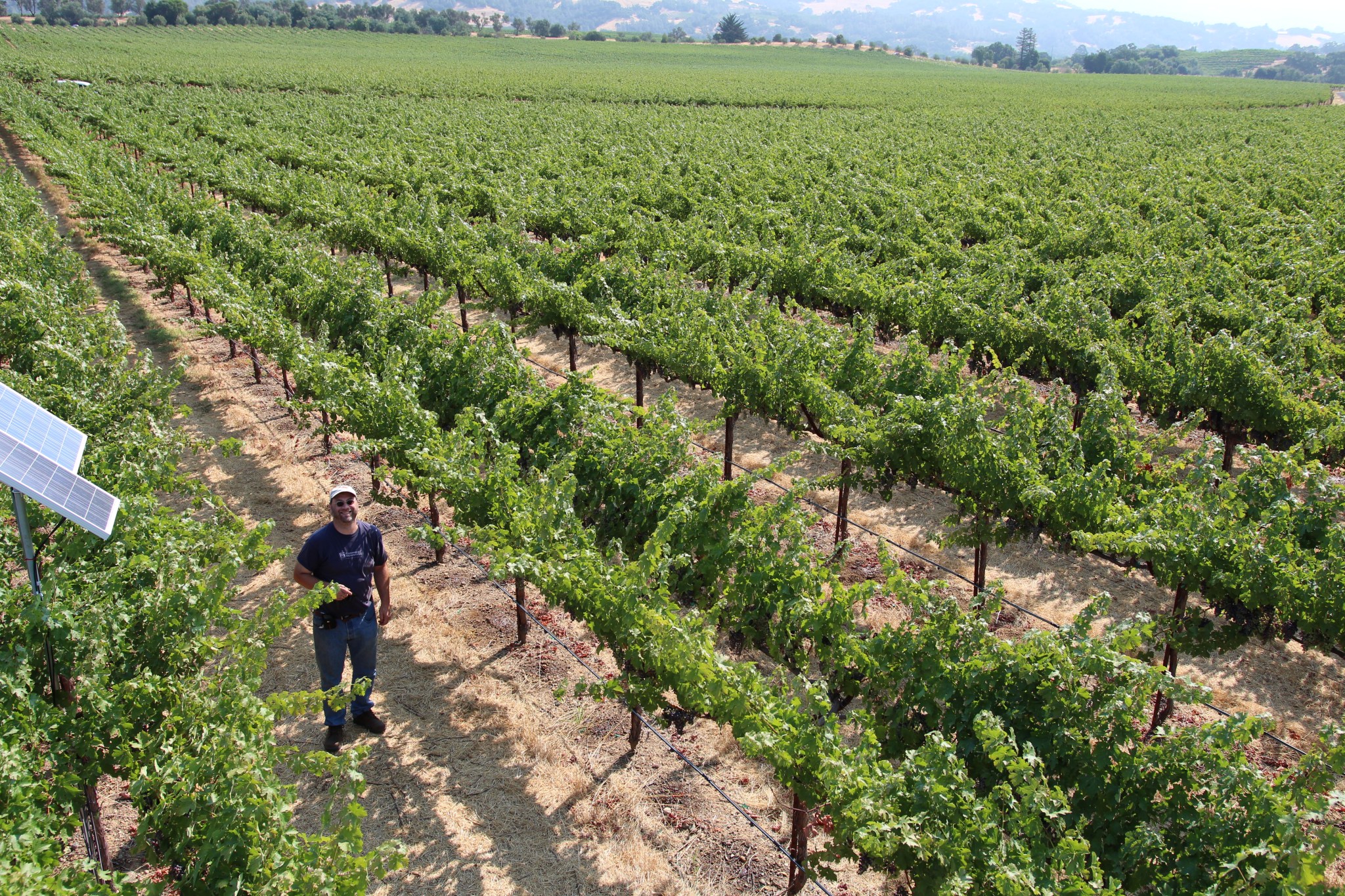Managing water use in its vineyards is a top priority for the E&J Gallo Winery and other vintners in California’s Central Valley, an area that often experiences drought.
Now, grape growers like Gallo are using data from Earth-observing satellites to better track soil and vine moisture levels, understand vine water use and plan grapevine irrigation.
The Grape Remote-sensing Atmospheric Profile and Evapotranspiration eXperiment (GRAPEX) project begun in 2013 is aimed at developing a multiscale remote-sensing vineyard management toolkit. It is the result of a private-public collaboration between NASA, the U.S. Department of Agriculture (USDA), Utah State University and Gallo.
“GRAPEX grew out of our desire to harness the power of the remote-sensing data provided by Landsat satellites,” said Nick Dokoozlian, vice president of viticulture, chemistry and enology at Gallo, referring to the land-imaging satellites developed in a partnership between NASA and the U.S. Geological Survey (USGS) for over 40 years. “It’s grown into a highly cross-functional, multidisciplinary project that’s far exceeded anything I could have imagined when we started.”
“The work with GRAPEX has dramatically improved our ability to accurately schedule irrigation,” Dokoozlian said. “Once we implement the findings of GRAPEX across our entire vineyard acreage, we will reduce the amount of water we apply for irrigation by up to 25%, and that’s a very, very big number.”
Dokoozlian’s Gallo team, working with the USDA’s Agricultural Research Service (USDA-ARS), uses an array of remote-sensing capabilities for mapping vineyard water use and water stress to improve irrigation scheduling and management.
To do this, they’ve created an “evapotranspiration (ET) Toolkit.” Evapotranspiration is the process of water evaporating from the soil and transpiring from a plant’s leaves. It is a process that cools the plant and soil down, so irrigated fields appear cooler in satellite images.
Landsat’s thermal imager instruments measure temperature changes in the vineyards. This information is included in the ET Toolkit along with other measurements like those showing the ‘greenness’ of the fields from Landsat’s visible light imager and similar satellite data.
Based on tracking this temperature and vegetation cover conditions, Dokoozlian and the Gallo team have a long-running, consistent record of water usage.
This daily ET Toolkit data help the team make weekly irrigation decisions to ensure Gallo’s fields are not too dry or too wet, saving time and money in irrigation costs across more than 100,000 vineyard acres.
Formal funding for the GRAPEX project by the NASA Earth Applied Sciences Program began in 2016, building on a longstanding effort between NASA, Gallo and the USDA to use satellite data to better manage vineyard irrigation.
Forrest Melton, an associate program manager for NASA’s Water Resources program area and senior scientist at NASA’s Ames Research Center in California’s Silicon Valley, says that providing data from Landsat satellites to vineyard managers in near real-time is an exciting opportunity to expand the range of agricultural applications of NASA science and technology.
“NASA understands that there’s real potential value in remote-sensing data for operational water management at the scale of individual fields, and the key is delivering that data in a way that is useful to ranch managers and irrigators,” said Melton.
Bill Kustas, a research hydrologist at USDA’s Agricultural Research Service, is the principal investigator for GRAPEX and has been with the project since it began. Kustas has watched the collaboration flourish as vineyard managers, growers, researchers and scientists came together.
“[Gallo is] providing good will and encouragement in the development of a system to improve irrigation efficiency and water conservation for long-term sustainability of agriculture in California and other water limited regions in the U.S. and abroad,” Kustas said.
GRAPEX started with a handful of investigators from USDA-ARS, including Kustas and Martha Anderson, a research physical scientist at USDA-ARS, and collaborators from Gallo, which owns and operates 25,000 acres of vineyards in California and contracts with grape producers operating approximately 100,000 additional acres to grow wine grapes.
The GRAPEX project now includes more than 40 scientists and technicians from University of California, Davis; Utah State University; California State University, Monterey Bay; the NASA Earth Applied Sciences Program; as well as a number of international research partners from Chile, Spain, Italy and Israel.
Dokoozlian says he’s also looking forward to incorporating GRAPEX with another project called OpenET. Scheduled to launch in early 2021, OpenET is an open web-based platform that consolidates publicly available data from multiple satellites and networks of agricultural weather stations into a single platform for farmers, landowners and water managers.
This summer, the GRAPEX team is building on several pilot programs to test the data and confirm previous recommendations and will be expanding ever further once the growing season begins.
By Maddie Ecker

